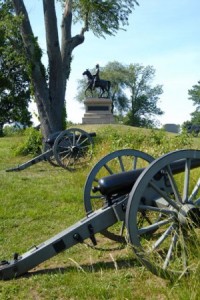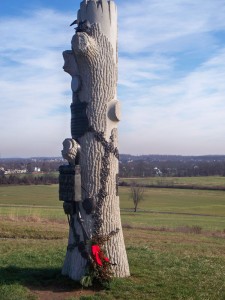Tag: Gettysburg Monuments
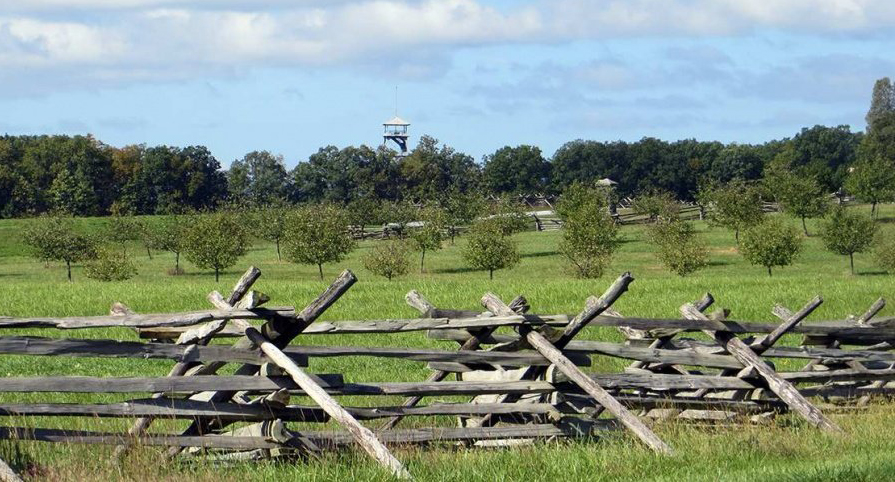
Battlefield Highlights: The Peach Orchard – Where The Battle Converged
October 29, 2024The Battle of Gettysburg, fought from July 1 to July 3, 1863, remains one of the most significant engagements of the American Civil War.
In the many long years since that famous battle, countless modern-day visitors to the southern part of the preserved battleground have been drawn to Devil’s Den and Little Round Top — the rocky hill is a must-stop for its panoramic views, and kids love the Den’s immense boulders. As the park evolved, these sites have received a lion’s share of attention, whether through preservation efforts, interpretation, or tourism. But throughout the actual battle itself, another nearby location known as The Peach Orchard would prove to be just as important (if not more so) to the outcome of the battle than many of those other, more famous locations.
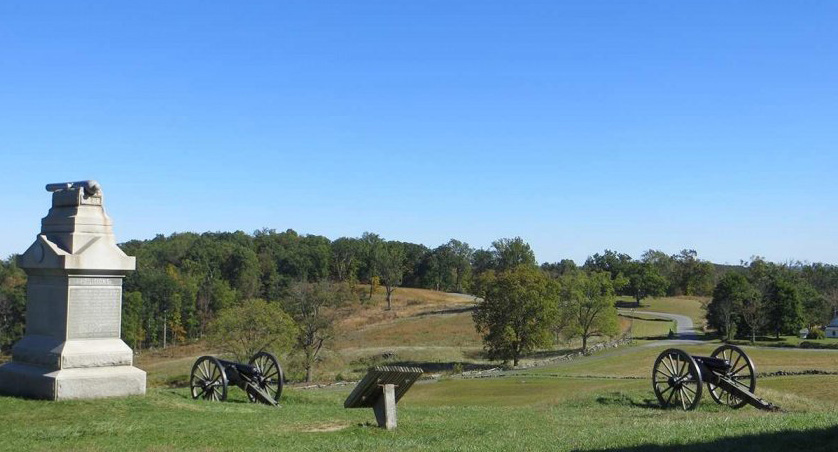
Battlefield Highlights: Culp’s Hill – The Long Fight
July 21, 2023One of the most important geographical features that played a prominent role in the Battle of Gettysburg is Culp’s Hill, located on the eastern side of the battlefield. The hill offered a high-ground advantage, providing Union troops an excellent vantage point to observe and defend against Confederate movements, while its elevation and rocky terrain made it an ideal defensive position.
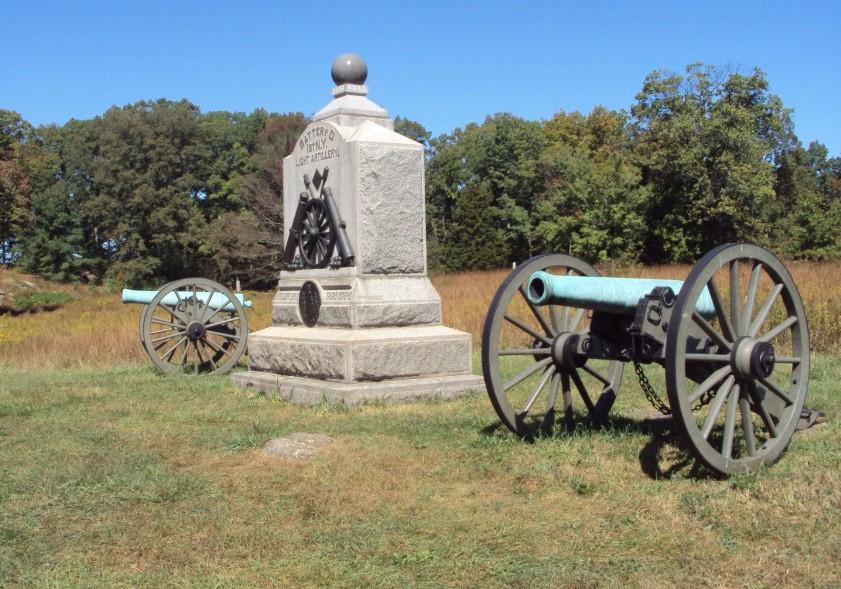
Battlefield Highlights: The Wheatfield
June 29, 2023The second day of the Battle of Gettysburg was the bloodiest day of the battle. Throughout that day, fighting at numerous locations around the battlefield involved 100,000 combatants, 20,000 of whom would end the day either killed, wounded, captured, or missing, making July 2nd, 1863, a truly dire day in the history of our nation. And centered amidst the near-constant ebb and flow of the ongoing carnage was a small patch of land… 19 acres of wheat owned by local farmer George Rose, that history would come to know as “The Wheatfield.”
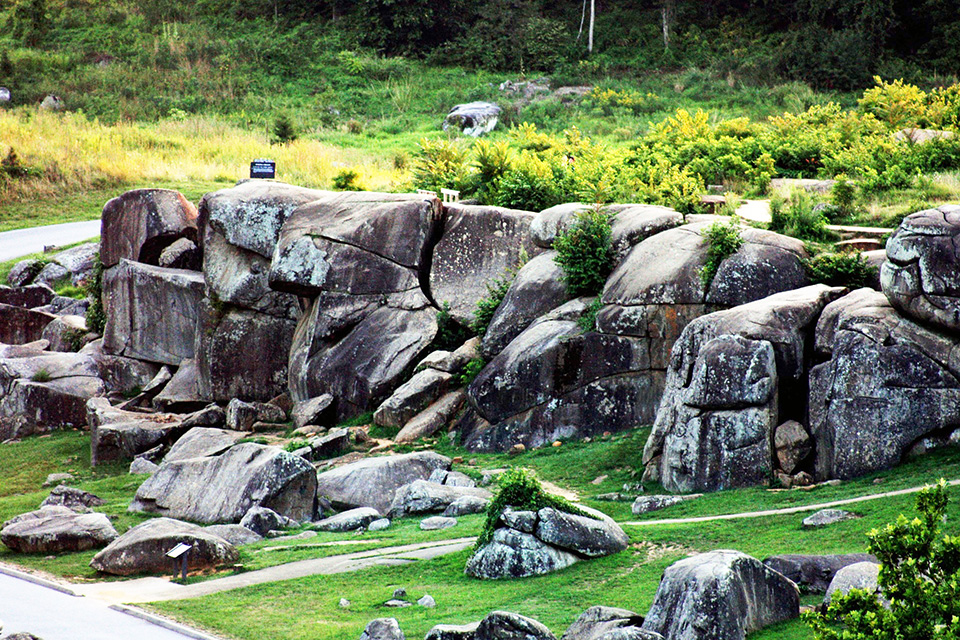
The Devil’s Den: Exploring the Key to Little Round Top
January 28, 2023One of the most famous battlefield locations at Gettysburg is Devil’s Den, a boulder-strewn hill rock formation located on the southmost end of Houck’s Ridge, about 500 yards west of the hill known as Little Round Top. Used extensively as a firing position by artillery and sharpshooters on the second day of the Battle of Gettysburg, it was the scene of some of the bloodiest fighting of the war and is an important stop on battlefield tours of the area.

The High-Water Mark: Revisiting a Pivotal Moment of the Battle of Gettysburg
July 19, 2022What is the High-Water Mark?
The High-Water Mark of the Confederacy or “high tide of the Confederacy” refers to an area on Cemetery Ridge near Gettysburg, Pennsylvania, marking the farthest point reached by Confederate forces during the action known as Pickett’s Charge on July 3, 1863. Like a high-water mark denoting a level of water, the term is a reference to arguably the Confederate Army’s best chance of achieving victory in the war. The designation “High-Water Mark” was formally evoked by historians in the years following the Civil War, based on the idea that the battle of Gettysburg was the turning point of the war.
New York State Monument
August 13, 2015 In 1886 only two New York State monuments had been erected on the fields of Gettysburg. Those two being the 14th Brooklyn & the 124th New York with neither of these two representing the City of New York.
In 1886 only two New York State monuments had been erected on the fields of Gettysburg. Those two being the 14th Brooklyn & the 124th New York with neither of these two representing the City of New York.
Veterans of the 83rd New York Infantry had a site chosen & a committee selected to watch over the construction – all they needed now were the funds to begin. Friends & survivors of the regiment were solicited for contributions & by Sept. 1887, almost $3500.00 had been collected.
Dedicated on July 1, 1888 – the monument to the 83rd New York was to become one of the single largest memorial dedications the battlefield would see. It was attended by veterans of the unit itself, plus other members of the First Corps, ranking officers from the battle & the entire 9th New York National Guard which was sent by the Governor of the State.
The memorial is a fifty-one foot tall shaft on levels of red & white granite. On top is a bronze cannonball & eagle. The eagle weighs in at 700 pounds & has a wing span of almost six feet.
The regimental badge can be found at the base with the motto “Ratione Aut Vi,” which means “By Reason or Force.”
Tennessee State Memorial
July 9, 2015The Tennessee State Memorial is the last of the southern states at Gettysburg to place a monument on the field. It is also the only state memorial built exclusively with private contributions.
Dedicated on July 2, 1982 at a cost of $25,000.00 this marker can be found on West Confederate Avenue.
Three Tennessee regiments took part in the battle & they are represented by the three soldiers etched into the face of the monument. Three stars on top symbolize the three geographic divisions of the state: eastern, central & western Tennessee. An outline of the State is cut into the 16 foot long base. Sixteen feet representing the fact that Tennessee was the 16th State to enter the Union.
Battle of Gettysburg FAQ’s
August 20, 2014When you are dealing with such rich historical series of events like the Battle of Gettysburg, there may be some questions that pop up as you learn more about this fascinating junction in our nation’s history. Our tour guides go through a rigorous testing process that allows them to answer just about anything you might want to know. In speaking with them and talking with people who are planning on a visit, we’ve put together a list of some of the most common questions we get each day shed some light on this famous battleground.
- Where is the Gettysburg Battlefield?
- The Gettysburg Battlefield is located in Adams County, Pennsylvania, and covers areas around and throughout the borough of Gettysburg.
- How large is the National Park at Gettysburg?
- The National Park at Gettysburg covers roughly 6000 acres!
- How many monuments are on the Gettysburg Battlefield?
- There are a wide range of monuments on the Gettysburg Battlefield and we encourage you to see them all! Offering around 1328 monuments to see, you may need more than a one day trip to see them all.
- Who put the monuments on the Gettysburg Battlefield?
- Was there fighting in the town of Gettysburg?
- There was some fighting in the streets of Gettysburg. Fortunately there was only one civilian casualty during the three days of battle. Unfortunately it was a young girl who was killed when a stray bullet came through two doors and struck her in the back killing her instantly. You can learn more about Jennie Wade and the Jennie Wade house on its history page here.
- Are there any homes or buildings that were here during the time of the battle?
- There are numerous homes and buildings that were here during the battle, and some still bear the scars from the fierce fighting that occurred. You can identify these homes or buildings by locating the small plaque between the doors and windows of the building that all say, “Civil War Building 1863.”
We hope this list covers one or more of the questions you may have had about the Battle of Gettysburg, but also understand you may have many more. If you’d like to see them covered in a future blog or want to reach out and find out for yourself, feel free to use our contact page and we’ll be happy to answer them for you!

1st Delaware Monument
August 16, 2013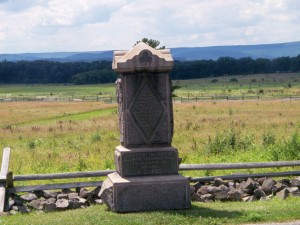 The State of Delaware supplied two regiments for the Union at the Battle of Gettysburg. One of these, the 1st Delaware, had the opportunity to spearhead a counter-charge on July 3rd as the the attack of General Pickett faltered at the wall these men were defending. This counter-assault by the men from Delaware resulted in the capture of several Confederate battle flags & many prisoners. The Battle of Gettysburg was to cost this unit 77 casualties & at battle’s end they were led by a lieutenant who was the highest ranking officer left. Their memorial was dedicated on June 10, 1886 & may be found on Hancock Avenue at the wall over which they charged that July day 150 years ago.
The State of Delaware supplied two regiments for the Union at the Battle of Gettysburg. One of these, the 1st Delaware, had the opportunity to spearhead a counter-charge on July 3rd as the the attack of General Pickett faltered at the wall these men were defending. This counter-assault by the men from Delaware resulted in the capture of several Confederate battle flags & many prisoners. The Battle of Gettysburg was to cost this unit 77 casualties & at battle’s end they were led by a lieutenant who was the highest ranking officer left. Their memorial was dedicated on June 10, 1886 & may be found on Hancock Avenue at the wall over which they charged that July day 150 years ago.
The 90th Pennsylvania Infantry
January 4, 2012The battle-scarred skeleton of an oak tree marks the junction of Doubleday Avenue and Mummasburg Road in Gettysburg. From a distance, you might wonder why such a tree is left standing, why isn’t a lively sapling planted in its place? Only as you draw closer do you begin to realize that this forlorn tree is more than it appears…that it stands just a little too straight…that it, in reality, is a monument.
The 90th Pennsylvania Infantry is forever memorialized in the “Stalwart Oak Tree” just described, dedicated September 3, 1888. The sides are scorched, the limbs torn away, in an imitation of the artillery fire damage that claimed the lives of man and nature alike. Of the 208 men from the 90th who fought at Gettysburg, just 8 were killed, but 45 were wounded and 40 were missing. It doesn’t seem like a lot, on the grand scale, but that was 45% of their number.
Examine the Stalwart Oak with care—you’ll find, near the top, a nest with mother bird and hatchlings. Many have speculated over the meaning of this sculpted detail. There are two primary schools of thought: some believe it tells the story of a soldier under fire, risking his life to rescue the baby birds and their fallen nest; others postulate that the nest is symbolic, representing new life rising from the tatters of war, much like the Phoenix being reborn. Either way, the monument is a powerful testament that deserves to be revered.
What does the Stalwart Oak say to you? Read about another powerful monument here.
